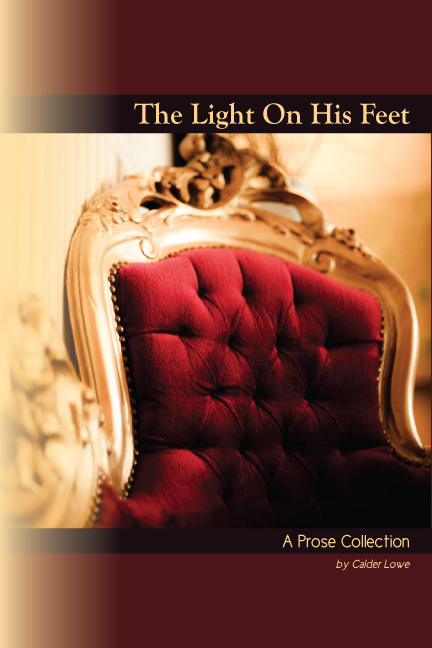Mellen Poetry Press.c2003. 51 pg. Cloth $24.95
ISBN: 0-7734-3562-X
“Experience teaches us that love does not consist in looking at one another in the eye, rather in looking outward together in the same direction.” …St. Exurpery.
The above quote describes well the success of Jean Emerson’s book for she allows the reader to exist on a parallel plane — sharing ideas, visions and emotional landscapes in a transpersonal book of poems. If more poets were able to do this, I believe more readers would come to poetry; and poetry would not remain so often alone on Mount Parnassus. The book won a Mellen Award during a national competition in 2003.
There are several reasons why “Lessons “ is an appealing book: It shows us a world while showing us how to see it. Another phenomenon is that there are ideas in this book that we can care about; and finally the poems are put together in such a variety of ways that you do not get a top-heavy feast but a nicely laid table of style and form.
Each poem is differentiated by roman numerals. This is an enticing book because it combines western psychology and a Buddhist reverence:
V I
There is wood smoke in the air
The new autumn moon holds Jupiter in its arms
There are irrational numbers
running off the edge to infinity
Frigate birds in formal wear
sing counterpoint to courting frogs
The angle of the incidence is equal and opposite
to the angle of reflection
Thus we see the poetic mind and scientific thought combined. Jean Emerson is a poet by vocation and a sociologist by profession. She is interested in botany, philosophy, beauty, art, the rational mind, legend, myth and story. All combine, then, in this book-long quest to consider the definition of what ”love” is. The point of departure comes in the form of a question she is asked to write about. The lesson is given to a group of writers, “write about someone you could not love.” From this, we have an exegesis of poems on what love is, or is not, and by whose observation. The expanding circle of thought is like a Rembrandt etching, starting from the tip of a nose and spiraling outward into hundreds of concentric circles to create, finally, a finished portrait. The significance here is that Emerson’s considerations may be analytical, but above all, they are poetic. Each poem is part of a book-length structure, some of which include the ambiance of the 11th century castle where she is living. The writing is permeated by the beauty of a real world, as well as a world of thought, high above the hills of Tuscany.
I
The long chain of history begins here
beneath this crumbling dome
held together by dead reckoning and chance
The morning bells come in on a cool dawn
The arch of my window holds no color
Junipers still charcoal with night reach up to the whitening sky…
…
From personal reminiscence to the world at large, others seek to influence the heart through their writings, Jean Emerson seeks to influence the heart with the mind.
Here, an example of her accessible and transforming lines:
XXIV
Henry Stack Sullivan explains love
by saying: “ We come into this world
seeking only comfort.
As we mature
it comes to pass that we make significant
connections
with others, “emotionally.”
As it turns out
We are more discomforted by
the discomfort
of certain others
than by our own discomfort…
This, the poet says, is what Sullivan calls love. As we see the poems are rich with psychological insight.
And yet are warmhearted:
XXXVIII
Please, let me have a word with you
perhaps a small word
carefully chosen
from the thick leather bound journals of antiquity
or one with fragments of lace still clinging to its edges…
…
The poet identifies specific memories of self and self-expression from her childhood years in an effort to find what people call “love.” The question is posed as a challenging life situation which blocks belief until it is examined by identifying certain memories:
XX
I have no definition of love
even though I was
my father’s favorite child
my mother’s reliable friend…
…
Maps of experience from the past can shape us, the poet tells us, and if we allow an honest look at ourselves we can turn the past into something of innate wisdom. When these factors are in place the poet can be a source of connection to the recipient. (reader). Here is where poetry turns the corner to reach the reader. Many poets want to be artists of high wire acts. Jean Emerson uses her mastery of language to have us notice our own thoughts and then look for our own pattern by following the poems.
XXIX
I have not wasted my time nor used it well
I have not learned the names of local birds
I have not learned Italian after all these years…
…
XXX
…
There is a point
on the continuum of time
where linear forces converge
Everything you have ever known
Everything ever known
crosses over and becomes
that which will be
It is the tick of a clock
The midpoint of the swing of a pendulum
the place where you choose the new path to the future
or not
As the poet contemplates her surroundings, a deeper understanding of place loosens the hold of self in the center of the poem, guiding us to be inspired by the poetic landscape as well as the psychological one.
“Who can doubt the dominance of Oleander
In the long smooth green of its leaf
the circle of pale corolla
hides the ghost of magnolias
the lure of the distant past…(XIII)
…
“ I would go into the garden of pomegranates
but for the circle of the serpent
that forms its infinite boundaries” …(IV)
…
“ I seek answers
below the castle walls
in the dahlia fields…” ( XII)
…
“The junipers remind me of redwoods
and the way that in redwood groves
someone always has to look up
into the blue eye of the sky
touch the feathery bark of redwood
and mention cathedrals…” (VII )
…
This is poetry of mindfulness. As the book proceeds there is a gradual increase in freedom of thought and variety of form, until the text is self liberating to writer and reader alike, accepting the realities of time and place. While each poem is unique in its own truthfulness, some poems seek to use the mind to exert the greatest influence over the listener, turning reason into poetic form.
XXII
The triangle is the strongest shape
holding us together and apart
like the walls
of Buckminster Fuller’s geodesic domes
Like dodecahedrons
fragile kites
of tissue and spokes
spinning in the sunshine
Each unit trying to break free and soar
desperately clinging together out of habit
or need
The author begins to answer her own questions about love, moving to society’s use and misuse, citing Rodney King and other news events. This is important in fully understanding Jean Emerson’s poetry, for all poets notice what others tune out, but Jean incorporates the facts that we tune in: news items, for example, which the average person comprehends. In this way the poems are able to be attentive to the world. All are invited along in the search for meaning.
Amidst the Italian countryside, among flowers, cats and birds, the poems give caring attention to all living things, affecting imagery with positive emotions and sensations. Finally the question of love posed in the beginning of the book is answered — demonstrated in the seriousness of discussion and thought. It is noticed in the feelings of the body, the location of place, until these become one with the reader who is made more aware of his/her own enhancements in life. The reader becomes physically connected to the sources of each poem, but the message of our commonality melts into our beings and becomes our own message.
Isn’t the purpose of writing to provide a generative experience? Passing on what we’ve felt so others may feel? That is emotional healing for the writer and for the reader as well. Here is where poetry becomes a powerful transpersonal process. Each vignette here – in itself – tells a story – all together a philosophy of life unfolds. And in this we find what we all share together.
Lessons from the Castle is a book that energizes our minds and our sensations. It is written by a woman well known for devoting her life to helping others learn creative writing. She is a leader in the field, facilitating the formation of writing groups. The search for community in Jean Emerson’s own life shows in the compassionate questions asked and answered in this book. It is a book of self but not of ego.
I read recently that when the Dalai Lama was asked how he felt upon receiving the Nobel Prize, he replied that he was happy for his friends who wanted him to receive it. This reviewer feels strongly through the quest for the wisdom of love, that Jean Emerson is happy for her readers.
XLIX
In the grotto beneath Montegufoni’s north portico
over time tourists have chipped away golden tile
robbed the rising Venus of due respect
…
some poet has found a bronze colored dahlia
Fit it snuggly into the peasant boy’s destroyed hand
Now instead of hate, he offers her this one
Magnificent flower.
Several of the poems are accompanied by line drawings of Castello Di Montegufoni and its surrounding area. The artwork is rendered by the author, poet Jean Emerson.
Grace Cavalieri is a Poet, and Producer of “The Poet and the Poem from the Library of Congress.”




